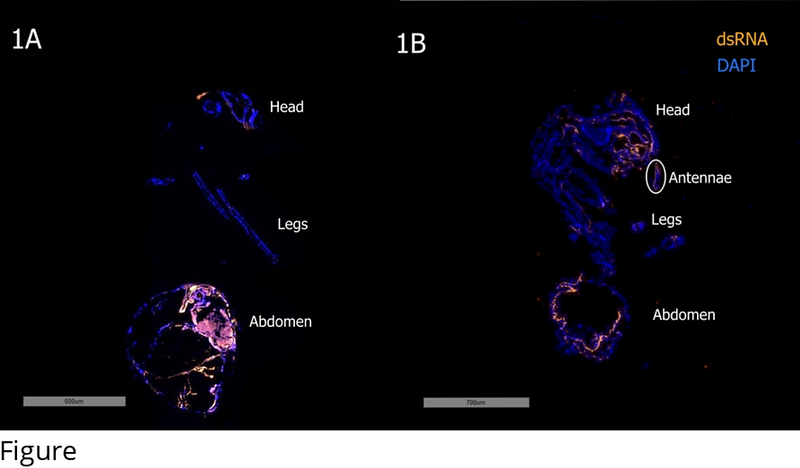Distribution and efficacy of ingested dsRNA targeting tissue-specific genes in the Argentine ant, Linepithema humile

Distribution and efficacy of ingested dsRNA targeting tissue-specific genes in the Argentine ant, Linepithema humile
Dittmann, M.; Buczkowski, G.; Harpur, B.
AbstractWith the increasing availability of genomic and transcriptomic information within Formicidae, the investigation of gene function has become possible within ants. However, eusocial life history renders the generation of transgenic strains of ants difficult outside of specific ant lineages that can induce reproductive behavior in workers. RNA interference (RNAi) remains a practical option to investigate gene function within their genomic context in ant lineages that do not exhibit reproductive behavior in workers. This method can be leveraged to investigate the large odorant receptor (OR) gene families present in ant clades. However, ORs tend to be expressed in a tissue-specific fashion, and the capability of dsRNA to achieve knockdown of genes exhibiting localized expression remains uncertain. In this study, we use fluorescently labelled dsRNA to track the spread of dsRNA through the worker body, qPCR to verify that dsRNA can knockdown gene expression in the antennae, and behavioral trials to verify that knockdown of ORs affects nestmate recognition. We found that orally-administered dsRNA is capable of being spread systemically and knocking down tissue-specific genes. Additionally, we found that RNAi may be useful in investigating the influence of ORs in eusocial insect nestmate recognition.